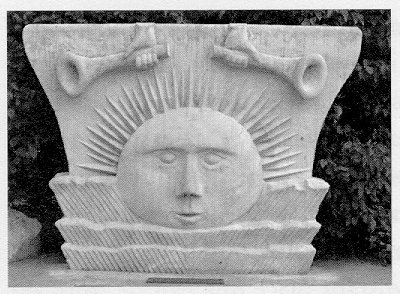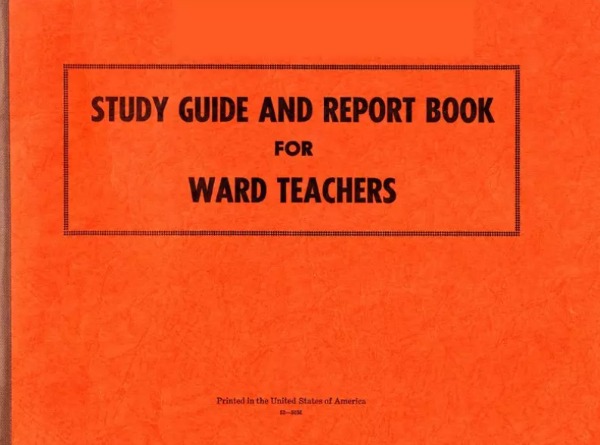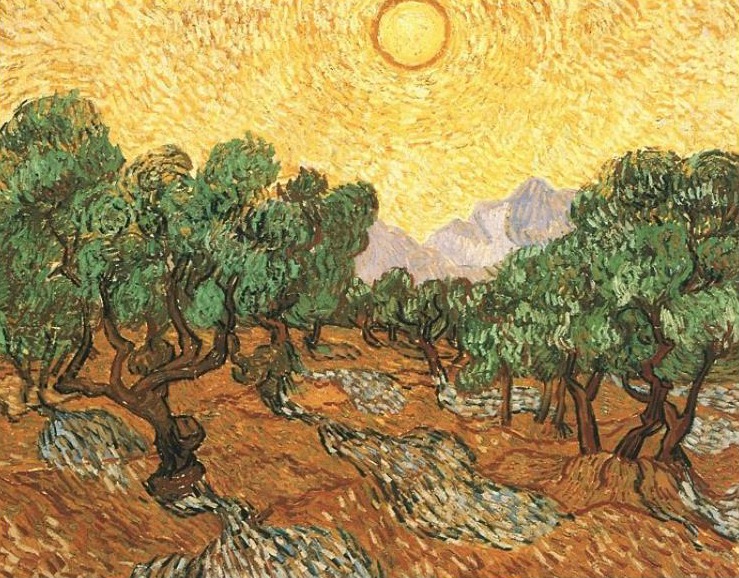Reflections on the Wildness of the 2018 Sunstone Symposium
Just recently, I attended the 2018 Sunstone Symposium. While having read a few Sunstone articles here and there, I had never attended a symposium before but was more than excited to go. I felt a lot of things throughout the weekend of Sunstone: amazement, hope, disappointment, and healing. But I came away having thoroughly enjoyed my time and wishing every member of the Church would come next year.
I left with an interesting impression that serves as the impetus of this article — Sunstone and the LDS Church need each other. The Church needs open academic forums like Sunstone to thrive by arriving at new and novel ways of approaching the Gospel. But Sunstone needs the Church to serve as a foundation upon which to create space and enrichment.
But before I get too far into this, it’s necessary to have some context into what Sunstone has been, is, and is trying to be.
What is Sunstone?
 The motto of Sunstone is “Faith Seeking Understanding,” and the mission of Sunstone is to sponsor open forums of Mormon thought and experience. They do this by publishing a magazine, organizing a symposium, and recording podcasts all under the Sunstone name. Open is the key phrasing in their mission. This means that anyone who identifies as Mormon, even if they’re from one of the Church’s many offshoots, can submit writing. And if they pass academic snuff and fit within Sunstone’s mission, it could get published in the magazine, or presented at a symposium.
The motto of Sunstone is “Faith Seeking Understanding,” and the mission of Sunstone is to sponsor open forums of Mormon thought and experience. They do this by publishing a magazine, organizing a symposium, and recording podcasts all under the Sunstone name. Open is the key phrasing in their mission. This means that anyone who identifies as Mormon, even if they’re from one of the Church’s many offshoots, can submit writing. And if they pass academic snuff and fit within Sunstone’s mission, it could get published in the magazine, or presented at a symposium.
As you would imagine, this means the breadth of topics covered is enormous. The summer 2016 issue, with the theme of polygamy, has titles like The Ghost of Eternal Polygamy, Progressive Polygamy, and Poly-wood! To be sure, these articles are not proselytizing materials. They are not full of pass-along-cards from the Community of Christ. Sunstone is a place of conversation — an exploration of ideas. The overall goal is not to win people over to your “side,” but to elevate Mormon cultural and institutional dialogue through a responsible and constructive exploration of new ideas.
This is a pretty lofty goal, and by their own admittance, they aren’t always successful. Like the so-called Mormon Bloggernacle, Sunstone and Dialogue, and publications like them, can be pretty wild places in comparison to our relatively tame and correlated 3-hour block. And I mean wild in the best way. Sunstone is where you can have the conversation you wish you could have in the foyer at Church.
LDS Church as Botanical Garden
Author’s Notes: This is not a perfect metaphor but it works for my purposes. This metaphor is focused on the capacity of good, healthy, and helpful dialogue and conversation — not salvific power. So before you breathe fire at me in Facebook comments, know that I am not saying Sunstone is better than the Church. That would be like saying I think TVs are better than knives — which is a nonsensical comparison.
 By way of comparison, take the LDS Church as a finely manicured botanical garden. I happen to love community gardens, botanical gardens, and garden centers. So I visit them often. What I’ve come to expect is that each flower is placed in a specific area, pruned to specification, and its name is inscribed on a plaque. There’s usually a map so you can have a pretty good idea of what is available to see and how to get there. A pathway will guide you around so you don’t have to do much work to experience the garden. But sometimes I’m left wanting more.
By way of comparison, take the LDS Church as a finely manicured botanical garden. I happen to love community gardens, botanical gardens, and garden centers. So I visit them often. What I’ve come to expect is that each flower is placed in a specific area, pruned to specification, and its name is inscribed on a plaque. There’s usually a map so you can have a pretty good idea of what is available to see and how to get there. A pathway will guide you around so you don’t have to do much work to experience the garden. But sometimes I’m left wanting more.
The LDS Church is this way because they utilize a Correlation Committee. You’ve probably never heard of this but no doubt benefitted from it. Believe it or not, there was a time when not every LDS Church on earth was having the same scheduled lesson on Sunday. In the 70s, President Joseph F. Smith established a correlation and consolidation effort. The primary purpose behind this change was to unify the LDS voice around the world. It was right around this time that growth rates in international areas were high.
There are tangible benefits to having such a highly manicured and correlated garden of Mormon discourse. Correlation is the reason you can go halfway around the world and experience the same 3-hour block in roughly the same format, be taught from the same manual, know how a ward functions, and participate in the sacrament. This is part of the reason why the LDS Church can mobilize so effectively in response to humanitarian crises or implement new plans and policies with such ease.
However, there are always unintended consequences to every good intention. One of the problems correlation created was that we ended up having our lesson manuals go unaltered for decades. This means 20+ years of the same lessons over and over again. The same ideas and dialogue, while being good, become old worn out cliches. Each chapter is basically a pre-planned lesson to minimize the effort of both class and teacher. And members are left with a feeling that they can’t deviate from the manual in their lesson plans.

Same goes for Home and Visiting Teaching being transitioned into Ministering. For instance, did you know that before Home and Visiting Teaching were instituted, we had Ward Teaching? It was basically the same thing, but the Church rebooted to H&VT for basically the same reasons we’re being moved to Ministering now — moving towards fostering a friendly community and away from a stock and formatted visit. The Church is constantly trying to avoid the side effects of their own correlation, which is an admirable effort. However, the Church moves slowly.
Another side effect of having good ideas and conversation become old worn out cliches is that people can suffer from spiritual malnourishment. I am one of those members. I have friends and family who are those members. No doubt this is part of the problem of Millennials leaving organized religion. The over-repetition of the same ideas, even good ideas, leads to the development of a cliche. Whatever original savor the idea had is now worn out. The 2018 rollout of the Come Follow Me curriculum is meant to remedy this.
But in the meantime, this is where an open, un-correlated, and wild forum like Sunstone has an advantage.
The Vitality of Wild Gardens
 I love Botanical Gardens. I love them because they are easy, accessible, and communal. However, when I need more, I go out into the wild. I am an avid hiker. I spend a lot of time in the Wasatch Mountains here in Utah. One of my favorite things about spring and summer is wildflowers. As I hike through different elevations and ecosystems, I encounter more plants and flowers than a person could fully appreciate by just casting their gaze over them. I love a lot of things about wildflowers, but having to work to get my smells and views deepens my love. It makes my experience deeply personal.
I love Botanical Gardens. I love them because they are easy, accessible, and communal. However, when I need more, I go out into the wild. I am an avid hiker. I spend a lot of time in the Wasatch Mountains here in Utah. One of my favorite things about spring and summer is wildflowers. As I hike through different elevations and ecosystems, I encounter more plants and flowers than a person could fully appreciate by just casting their gaze over them. I love a lot of things about wildflowers, but having to work to get my smells and views deepens my love. It makes my experience deeply personal.
As well, the flowers won’t volunteer their names to me with a placard. By-in-large I am ignorant of their binomial nomenclature as well as their colloquial names. Some of them can be eaten or used to make teas. Some you absolutely should not eat because they could make you sick or taste quite foul. But the joy is in the adventure of it — I earn my enjoyment by the sweat of my brow.
I would compare Sunstone Magazine and Symposium to a wild mountainous hillside. As I said above, their commitment to open dialogue brings in a varied Mormon community. I had dinner with a member of an LDS Church split-off group one night then befriended someone who was raised in a polygamist household the next day. Our conversation was friendly and engaging. I found we shared some pretty core values but differed in how we engage with those values. And there was no contention at all. Everybody from The Community of Christ to orthodox mainstream members of the LDS Church agreed to leave ideological weapons at the door. This was about fostering understanding and relationships, not about proving correctness.
There were dozens of presentations each day. Some were about fearlessly wrestling with Church history, others about polygamy, while some seek to highlight the Eastern sensibilities within Mormonism through meditation. A certified Mormon sex therapist, Natasha Helfer Parker, had a lively Q&A session I attended. And the infamous Mormon Leaks presented on institutional transparency. And much, much more.
 The beauty of such a varied landscape of ideas is that the Gospel, the Church, and Mormonism is being talked about in new and novel ways. This is able to bring to view lovely aspects of Mormonism that have always been there, but remained hidden from me because the cliches got in the way.
The beauty of such a varied landscape of ideas is that the Gospel, the Church, and Mormonism is being talked about in new and novel ways. This is able to bring to view lovely aspects of Mormonism that have always been there, but remained hidden from me because the cliches got in the way.
This development of ideas is the heavy lifting of historical and theological studies. After All, this type of forum of open discussion and grappling with big concepts was essentially what the School of the Prophets was about. At Sunstone, easy and simple answers aren’t offered. What is offered, though, is a chance to stretch the mind.
Stephen Carter, the Director of Publications at Sunstone, offered me this, “the diversity of interpretations, when we can talk about them in a safe space, makes our Mormon experience richer.” According to Carter, Mormonism is enriched when we are able to creatively engage with it. Based on my experience, I happen to agree.
Grafting in Sunstone’s Wild Branches
The LDS Church needs this fertile ground Sunstone provides. Jacob 5:9-18 in The Book of Mormon demonstrates the God uses the vitality of wild things to keep his vineyard alive. It takes watchful care and cultivation, or else the wild can overtake the tame trees. But there is an undeniable strength in wild things. Jesus retreated to the wilderness on many occasions, to gain strength performing miracles, to be tempted, and to commune with God on the mount of Transfiguration. And let’s not forget that Jesus was baptized by John the Baptist who was a voice crying in the wilderness.
 The LDS Church operates as a very tame olive tree. It is a bastion for the early development of spirituality — it may be one of the best there is. Milk before meat is a good and spiritually nutritious principle for a specific stage in life. But as Robert L. Millet wrote, “eventually we need meat.” Publications like Sunstone, Dialogue, or Exponent II are wild places full of milk and meat. Not all of it is good, but some of it is so refreshingly good that it can spur you on to greater growth.
The LDS Church operates as a very tame olive tree. It is a bastion for the early development of spirituality — it may be one of the best there is. Milk before meat is a good and spiritually nutritious principle for a specific stage in life. But as Robert L. Millet wrote, “eventually we need meat.” Publications like Sunstone, Dialogue, or Exponent II are wild places full of milk and meat. Not all of it is good, but some of it is so refreshingly good that it can spur you on to greater growth.
All of this would be useless, of course, without the common ground experience that the LDS Church provides. It is the same background from which we all live our lives — a common language we all share. And The Church masterfully provides this common voice — it is almost beyond value. So if you feel like you are ready for a little more than what you get on Sundays, find a Sunstone magazine and read an article. It might challenge your ideas and push you into a new stage of spiritual development.
But perhaps my favorite aspect of Sunstone was the space I felt. If you’ve read any of my articles, you already know I approach Mormonism from a pretty unique angle. I am a post-faith-crisis Mormon. I have had my faith deconstructed and had to do some hard reconstructive work. Ever since my experience, though, going to Church has never quite felt the same. I sometimes feel like I can’t safely be vulnerable and share my thoughts with my quorum or class. And being part of a community which I don’t feel like I can fully show up in can be grating and exhausting at times.
When I walked into Sunstone, though, I felt a welcoming space. There was room enough for me here. To one degree or another, everyone at Sunstone understood what it meant to wrestle with angels. Each person I asked, “what brought you to Sunstone,” replied with a sigh, “it’s a long story.” My heart would break with theirs because I knew exactly what they meant. And we could extend compassion to each other and listen to each other’s stories. It was validating. It was comforting. But above all — it was healing.


